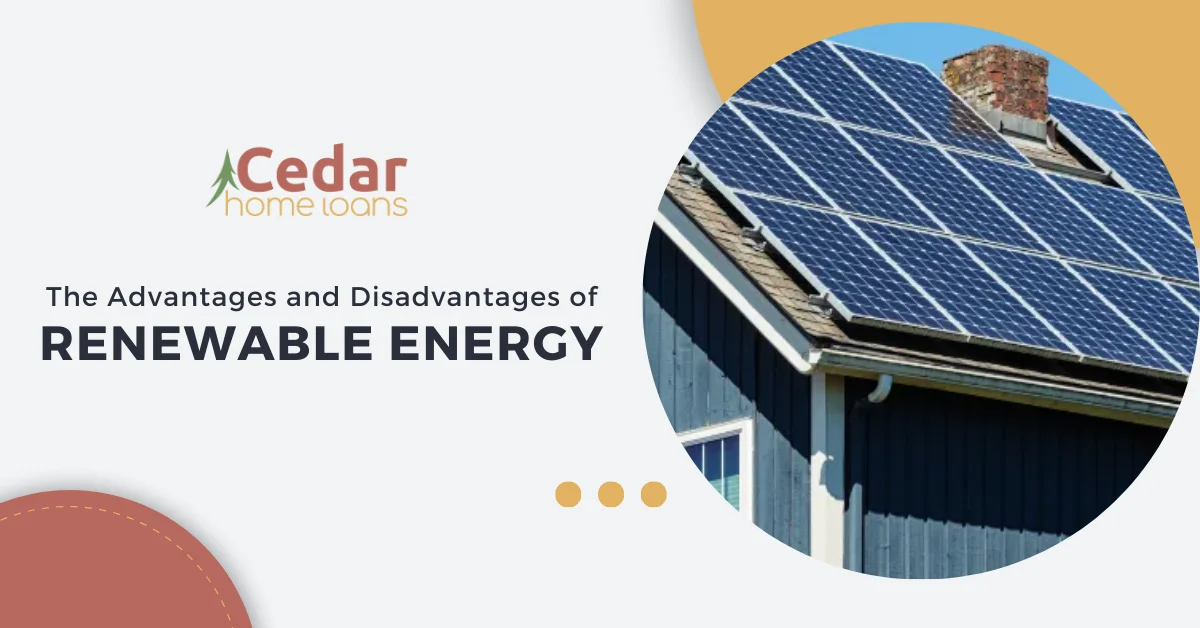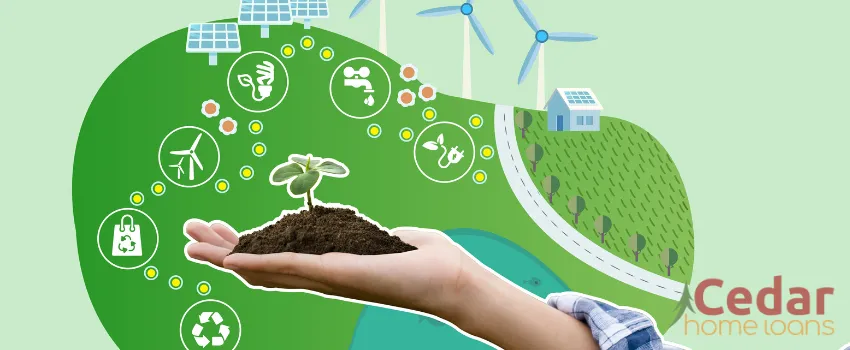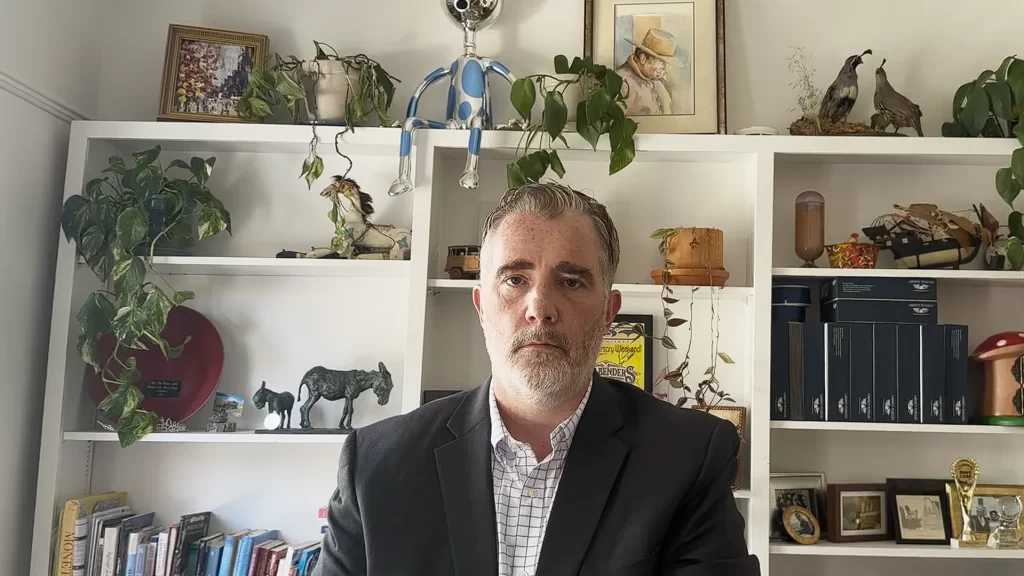As a homeowner, thinking of ways to save money on expenses like electricity and utility bills is natural. This is where alternative energy resources become beneficial. Aside from their lower cost, renewable energy can also help homes reduce their dependence on traditional energy grids and minimize their environmental impact.
However, there are also disadvantages before switching to alternative energy resources. Learn about the advantages and disadvantages of renewable energy in your home below.
What Is Renewable Energy?
Renewable energy is an umbrella term for alternative energy sources produced from natural elements with little adverse environmental impact. Combining different alternative sources of energy can harness the strengths of each while mitigating their weaknesses.
Here are the answers to the question, “What are alternative energy sources?”
1. Solar Energy
Solar energy derives power from the sun’s radiation using photovoltaic cells or solar thermal systems. Photovoltaic cells directly convert sunlight into electricity, whereas solar thermal systems absorb and store the sun’s heat for various applications.
This type of renewable energy is abundant, clean, and ecologically benign, making it an appealing substitute for fossil fuels. Its use has risen due to technological advances, cost reductions, and supportive legislation.
2. Wind Energy
Wind energy is the power generated by the kinetic energy of the wind. It’s a renewable energy source used to power sailboats and windmills for millennia. Wind turbines are utilized in modern times to transform wind energy into electricity. The components of the turbines include enormous rotor blades that rotate when the wind blows, powering a generator that generates electricity.
3. Hydroelectric
Hydroelectric power uses the energy of moving water in the same way that wind energy does. Water, on the other hand, replaces air as the working fluid in hydroelectric systems. Large quantities of electricity can be created by building enormous dams and employing turbines. However, the initial expenses can be high.
4. Geothermal Energy
This alternative energy resource extracts heat from subsurface hot water or steam reservoirs and transforms it into usable energy. The process involves using wells to reach geothermal reservoirs, where heat is transmitted to a fluid that drives turbines to generate electricity.
5. Biomass
Biomass energy comes from organic materials such as plants, agricultural waste, forestry residues, and specific energy crops. The process requires converting these organic molecules to release stored energy via combustion, gasification, or biochemical processes.
It’s also considered carbon neutral. The carbon dioxide emitted during combustion is balanced by the carbon dioxide absorbed during the growth of the biomass feedstock.
6. Tidal Energy
Tidal energy, commonly known as ocean energy, is a type of hydropower that takes advantage of the energy created by the natural rise and fall of tides. Tidal energy is part of the larger category of hydropower rather than a separate energy source.
Additionally, tidal energy generates power by utilizing the kinetic energy of moving tides via various technologies such as tidal turbines or barrages.
What Are The Advantages of Alternative Energy Sources?
Alternative sources of energy offer several advantages. If you’re thinking of changing your home energy source, consider the pros and cons of renewable energy.
Some of the significant pros include:
1. Renewable energy sources will not run out.
The main benefit of alternative energy sources is that they are self-sustaining and won’t deplete easily. Solar, wind, hydro, and geothermal sources provide a sustainable and almost infinite energy supply.
2. Renewable energy generation costs are more stable.
Alternative sources of energy provide higher price stability than traditional electricity-producing methods. Once the infrastructure for alternative energy systems is in place, the costs of generating power from these sources become more consistent over time.
On the other hand, traditional energy generation primarily relies on fossil fuels. These are prone to price volatility due to global market changes, geopolitical tensions, and supply disruptions.
3. Renewable energy can increase public health.
Using alternative energy sources at home provides numerous health benefits. For starters, it improves indoor air quality by lowering reliance on combustion-based heating systems, which can produce hazardous chemicals to respiratory health.
Switching to renewable energy sources also reduces the risk of respiratory disorders, allergies, and asthma caused by indoor air pollution.
4. Renewable technologies require less maintenance costs.
Compared to typical energy sources, renewable technology such as solar panels and wind turbines require less maintenance. This is because their designs are more straightforward, with fewer moving parts. As a result, it decreases the danger of mechanical failure and the need for regular repairs or replacements.
What Are The Disadvantages Of Alternative Energy Sources?
When discussing the advantages and disadvantages of renewable energy, it’s only natural to include the downside to expect. Although beneficial, alternative energy sources have their setbacks, too, such as:
1. Renewable energy is not available around the clock.
One disadvantage of using renewable energy sources is their reliance on the weather. Solar cells, for example, are most effective when exposed to ideal weather.
However, solar panels may provide less or no electricity during adverse weather, such as heavy rain and thunderstorms. Therefore, it may be necessary to return to traditional power sources.
2. The efficiency of renewable technologies is low.
Energy conversion efficiency is critical in establishing the viability of various energy sources. A disadvantage of renewable technology is its lesser efficiency than typical energy conversion equipment. For example, solar panels on the market typically have efficiency levels ranging from 15% to 20%.
Meanwhile, traditional technologies based on coal or natural gas can attain higher efficiency levels of up to 40% and 60%, respectively. This efficiency disparity is significant when comparing renewable technology to traditional energy sources.
3. The initial cost of renewable energy is high.
The price of buying and installing specialist equipment, such as solar panels, can make the initial cost of incorporating renewable energy in houses exorbitant. Extra parts like inverters, batteries, and monitoring systems may also impact the cost.
Renewable energy systems provide long-term financial benefits through decreased energy costs and other incentives. Moreover, the potential for energy independence makes the investment in renewable energy worthwhile for many homeowners.
4. Renewable energy devices need recycling.
The advantages and disadvantages of renewable energy are often related to their environmental impact. One environmental disadvantage is that recycling renewable energy equipment adds complexity and cost to the overall lifecycle of these devices. While recycling is vital for reducing environmental impact and conserving resources, it can also introduce household logistical challenges and budgetary considerations.
How Efficient Is Alternative Energy?
When it comes to efficiency, alternative energy sources can be pretty effective. Technologies like solar panels and wind turbines have improved significantly over the years, making them more capable of converting natural resources into usable energy.
You must also note that the efficiency of alternative energy sources can vary depending on factors like location and weather. However, they continue to advance and offer promising solutions for generating clean and sustainable power.
Is Alternative Energy Good for The Environment?
Alternative sources of energy are necessary for mitigating climate change and improving environmental quality. In contrast to traditional energy sources, alternative energy technologies produce electricity without emitting significant carbon dioxide or other hazardous pollutants into the atmosphere.
In addition, alternative energy sources can also help lessen the negative effects of climate change, such as rising temperatures, by reducing greenhouse gas emissions. Furthermore, renewable energy improves air quality and reduces risks of respiratory diseases by decreasing the discharge of sulfur dioxide, nitrogen oxides, and particulate matter.
Why Is Alternative Energy Not Used More?
Alternative energy is not used more widely for a few reasons. First, the initial cost of installing alternative energy systems can be expensive, making it less accessible for some individuals and businesses. Furthermore, the infrastructure for traditional energy sources is already well-established, making it easier to rely on existing systems.
However, as technology improves and costs decrease, the advantages and disadvantages of renewable energy become increasingly evident. The growing awareness of environmental issues and the long-term benefits of sustainable energy drive the gradual adoption of alternative energy sources.
Key Takeaway
Before changing their home’s energy source, homeowners should look into the advantages and disadvantages of renewable energy. Renewable energy for houses has various benefits, including a sustainable and clean energy supply and reduced dependency on fossil fuels.
On the contrary, homeowners should also consider the initial high installation cost and the necessity for efficiently recycling renewable energy devices. Despite these hurdles, technological improvements and supportive regulations make renewable energy an increasingly appealing alternative for households.
Ultimately, assessing the pros and cons of renewable energy saves you time and unnecessary expenses.
Pay for your home’s energy upgrade with the help of Cedar Home Loans.
With the help of Cedar Home Loans, you can upgrade your house’s energy efficiency and lower your carbon footprint. With our Frisco home loans, we can help you get the funding for energy-saving upgrades like solar panels, energy-efficient appliances, and insulation.
Along with potentially saving money on your energy bills, working with us will improve your property’s sustainability. Contact us today to get your energy improvement underway and take a step toward a greener future.





